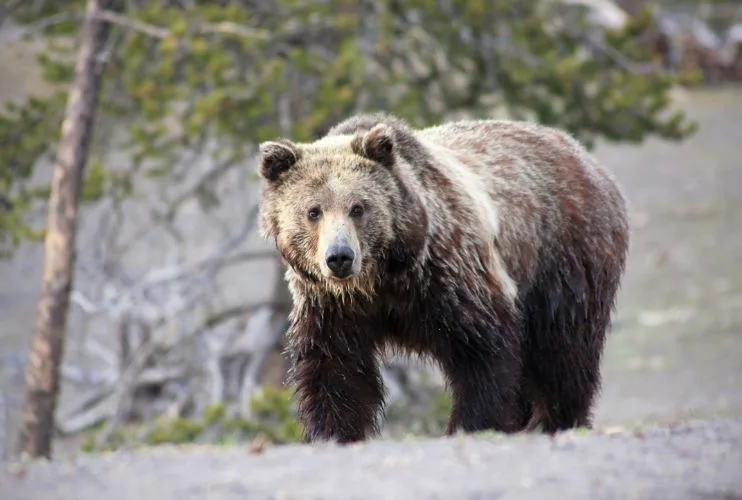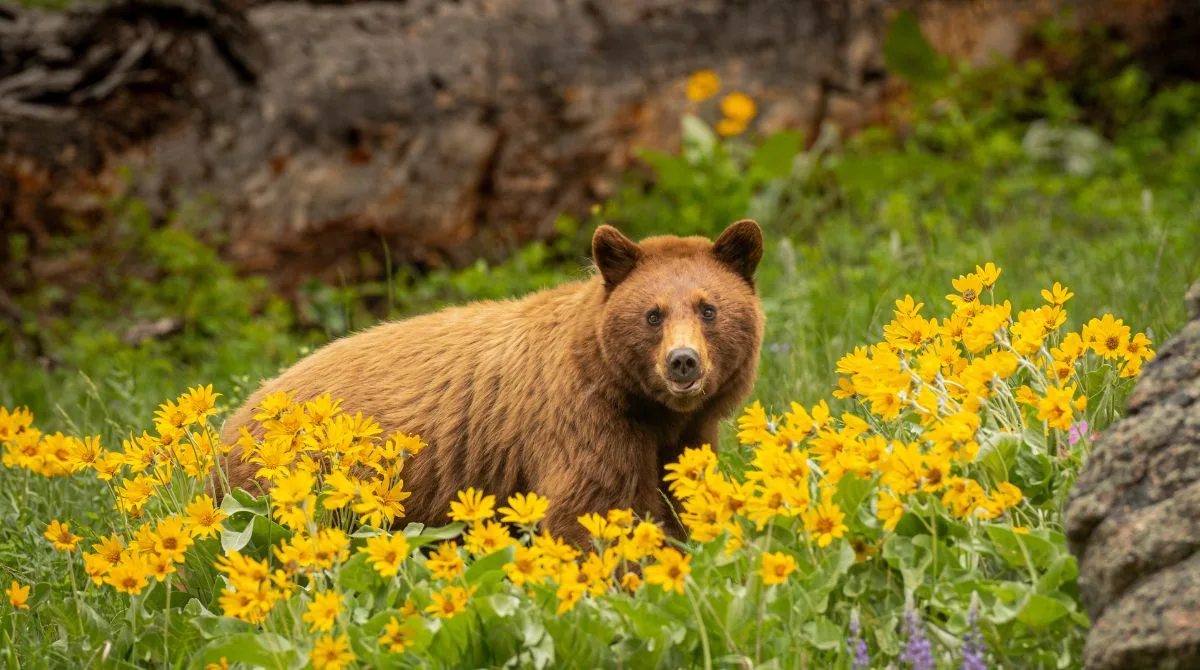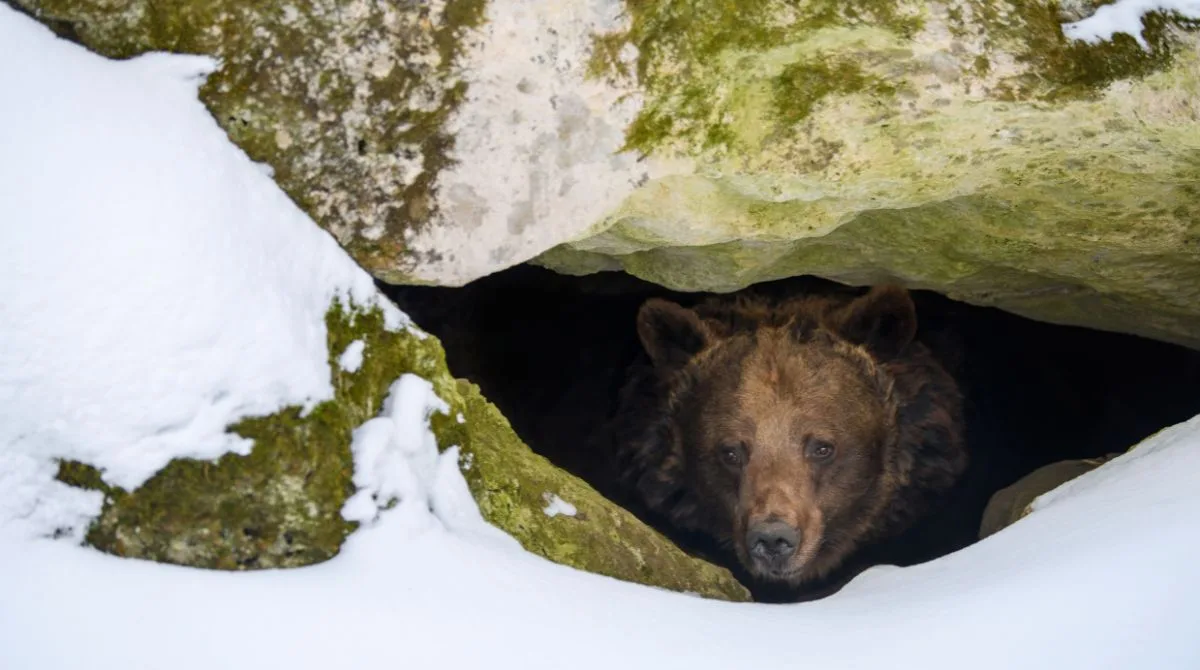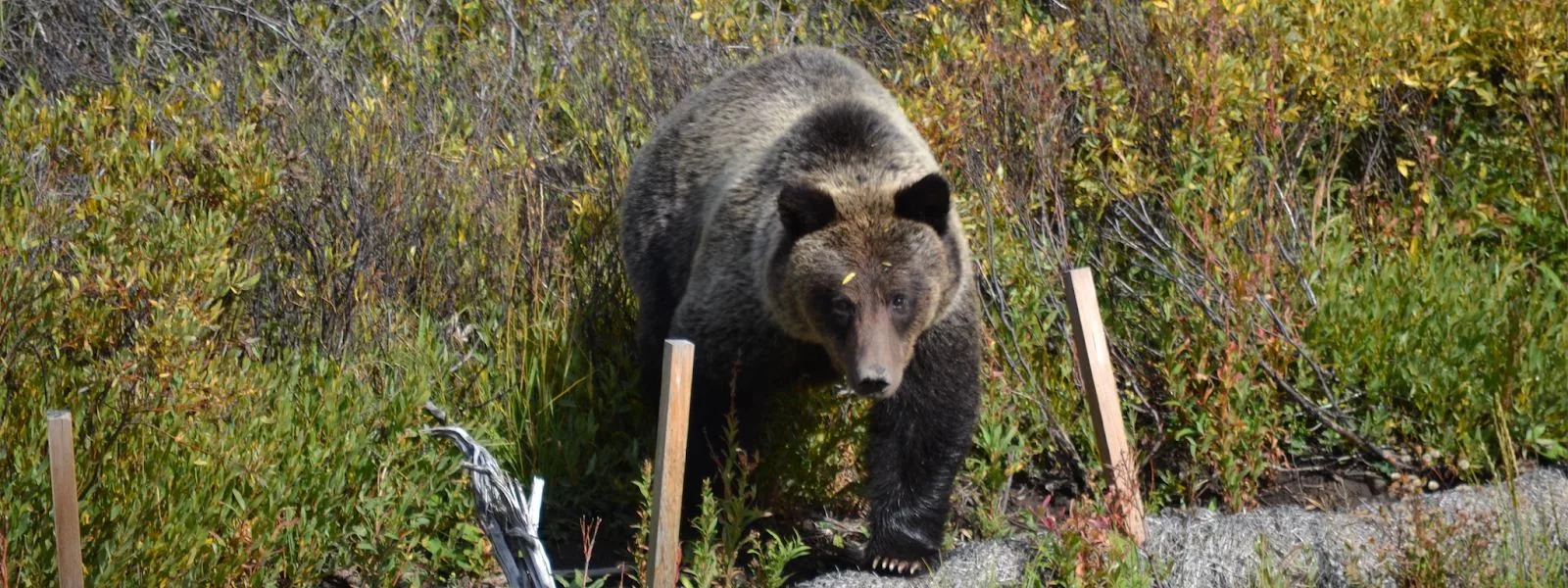
Bear Foods Through the Seasons
Bears are opportunistic omnivores, meaning that they eat a combination of meat and plants. The food habits of black and grizzly bears have many similarities, but there are also differences. The primary difference is that grizzly bears are adapted to eating more meat and roots than black bears.
Understanding the food preferences of bears will allow you to predict where you may encounter a bear throughout the year.

Spring
From March to May bears are drawn to lower elevation where retreating snow is replaced by emerging grasses, sedges, dandelion, clover, spring-beauty, and horsetail, as well as insects and grubs. Bears feed on ungulates primarily as winter-killed and wolf-killed carrion, but also through predation on deer fawns and elk calves. Grizzly bears also dig up pocket gopher caches in localized areas where they are abundant.

Summer
As summer unfolds in Wyoming bears may ascend to higher elevations for cooler temperatures and more nutritious food sources. During this time bears continue to consume succulent grasses and sedges, dandelion, clover, spring-beauty, horsetail, and ants. In addition, thistle, biscuit root, fireweed, fern-leaved lovage, and army cutworm moths are eaten. Predation on deer fawns and elk calves continues through mid-July when most bears are no longer able to catch fawns and calves. By late summer, bears transition to eating key berry crops such as chokecherry, serviceberry and huckleberry.

Fall
In the fall bears enter a state called hyperphagia where they eat nearly nonstop to obtain enough fat reserves to survive winter hibernation. During this time, bears may consume up to 20,000 calories a day. Bears are drawn to areas with concentrated food sources in the fall, such as berry patches. Bears also scavenge hunter killed game animal carcasses.
Fall is also the time of year when most human-bear conflicts occur. Bears are often at lower elevations where their paths may cross developed areas, that’s why it is critical that all bear attractants are properly secured during this time of year.

Winter
Most bears hibernate or den during the winter months. The length of denning depends on location, and can vary from a few days or weeks to a few months or more. Bears make their dens in hollow trees or logs, under the root mass of a tree, or even in rock crevices. Their bodies use the fat they stored in the summer and fall as energy.
What to Look Out For
When exploring bear habitats in Wyoming, recognizing signs of foraging activity can enhance safety and understanding of these creatures’ behaviors. For black bears, look for upturned rocks, torn-up logs, or overturned soil where they’ve sought insects and grubs. Tracks with prominent claw marks and claw-dug patches on the ground are also indicators. Grizzly bears might leave similar signs, but their larger size often results in more extensive damage to logs, rocks, and soil. Their claw marks may be deeper and more widely spaced. Scat, often containing berries and vegetation, is a common clue for both species. Additionally, broken branches or stripped bark on trees could signify bears searching for food.



